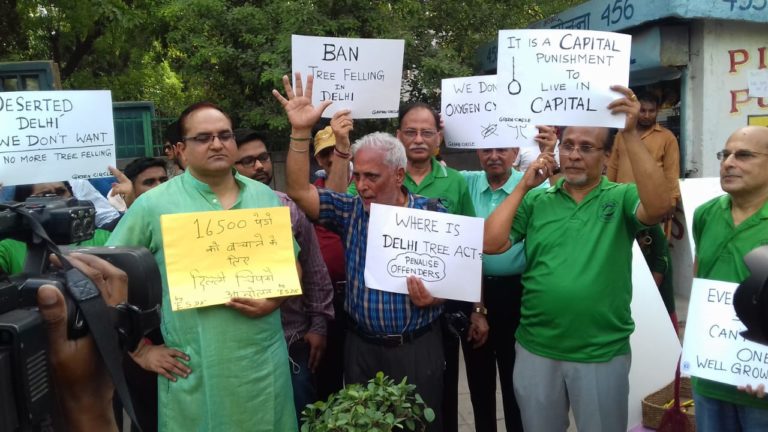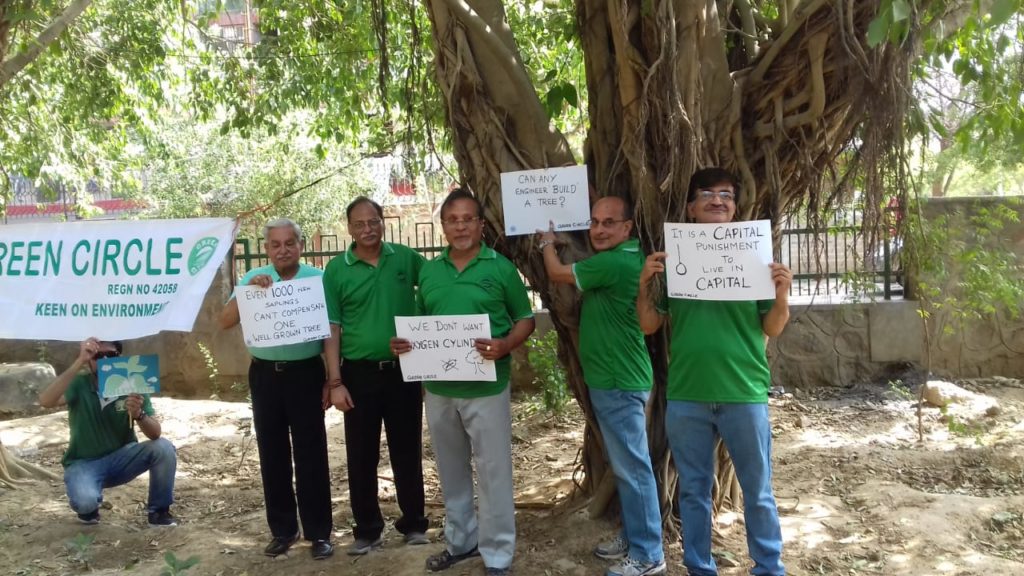
V. Selvarajan, Founder Green Circle
(Authors Profile: – The author is an environmentalist and a birder, and crusader against tree felling, has filed a petition in NGT against Sarojini Nagar felling. He works against garbage burning in Dwarka and presently continuing as Secretary of Green Circle, a 2002 registered NGO. Professionally, he is an ex banker and faculty member in Banking holding an MBA CAIIB qualification)
Delhi is searching for clean air as the Air Quality Index has already peaked out beyond dangerous level. The official norms and definitions of forest cover in Delhi appear to be misleading and make the planners paint a rosy picture to satisfy the netas and people alike. In Delhi, we all talk about deteriorating air quality and demand oxygen but we comfortably forget that trees are the only solution. An effort is made in this article to ascertain the anomalies in the forest policy in Delhi and discuss corrective measures to revisit the present status of pollution control measures in the pretext of ongoing deforestation in Delhi
Delhi’s status of Forest
The National Forest Policy, 1988 provides that a minimum of 1-3rd of the total land area of the country should be under forest area. As per 2015 status report of forests, Delhi has 299.58 sq km of land under forest which accounts for 20.22 % of the Geographic area which means still we are lagging behind in tree cover. Precisely, 300 sq.kms i.e. one fifth of Delhi is forest logically. Out of this, 111 sq.kms is TREE COVER and 189 sq. kms is FOREST COVER making a total of say 300 sq.kms. However this author attempted to analyse the status of forests in the light of the official definitions offered by forest department which has provided the above data.
What is Forest cover?
The term ‘Forest Cover’ used in the State of Forest Report (SFR) refers to all lands more than one hectare in area, having a tree canopy density of more than 10%. Assuming that the forest department has accounted forest cover at this ratio, then it goes without saying that all the accounted forest area of 188.77 Sq KMs will have just in reality counts for 10% of it. In other words, the greenery (or tree) requirement in these areas may be hardly 19 Sq KMs of actual forests or may be a little more of it. Let’s assume that it may be 30 Sq KMs on a ‘generous’ accounting (extrapolation of data is quite a common thing in statistical methods). The term ‘Forest Area’ (or recorded forest area) generally refers to all the geographic areas recorded as forest in government records. Recorded forest areas largely comprise Reserved Forests (RF) and Protected Forests (PF), which have been constituted under the provisions of Indian Forest Act, 1927. Besides RFs and PFs, the recorded forest area may include all such areas, which have been recorded as forests in the revenue records or have been constituted so under any State Act or local laws.
What is Tree Cover?
Tree cover comprises of tree patches outside the recorded forest area exclusive of forest cover and less than the minimum mapable area (1 ha). These lands are not recorded forest area as per definition above. These areas may be found in private land as well as road sides. Such areas may include orchards, bamboo, palm etc which neither produce enough oxygen nor filter carbon emissions. However in the definition of tree cover, these trees are also included in the policy papers.
What is Forest then?
As stated in the above definitions, Forest cover as well as Tree Cover account for the term ‘forest” which means that the presence of trees over private areas or residential areas too also account for the forest area. This is how Delhi has a forest of 299.77 Sq Kms which included 111 sq. kms tree cover and 188.77 sq. kms forest cover. If Delhi flaunts that it has forest to the tune of a fifth of the Geographic area of 1500 sq km, it is indeed a farce and just a play with the jugglery of definitions and an effort to shut the mouths of the conscious citizens. Real efforts should be made using satellite mapping and scientific technologies.



Well explained. Selvarajan ji is a well known and dedicated environmentalist . His team is working towards this direction untiringly . My best wishes